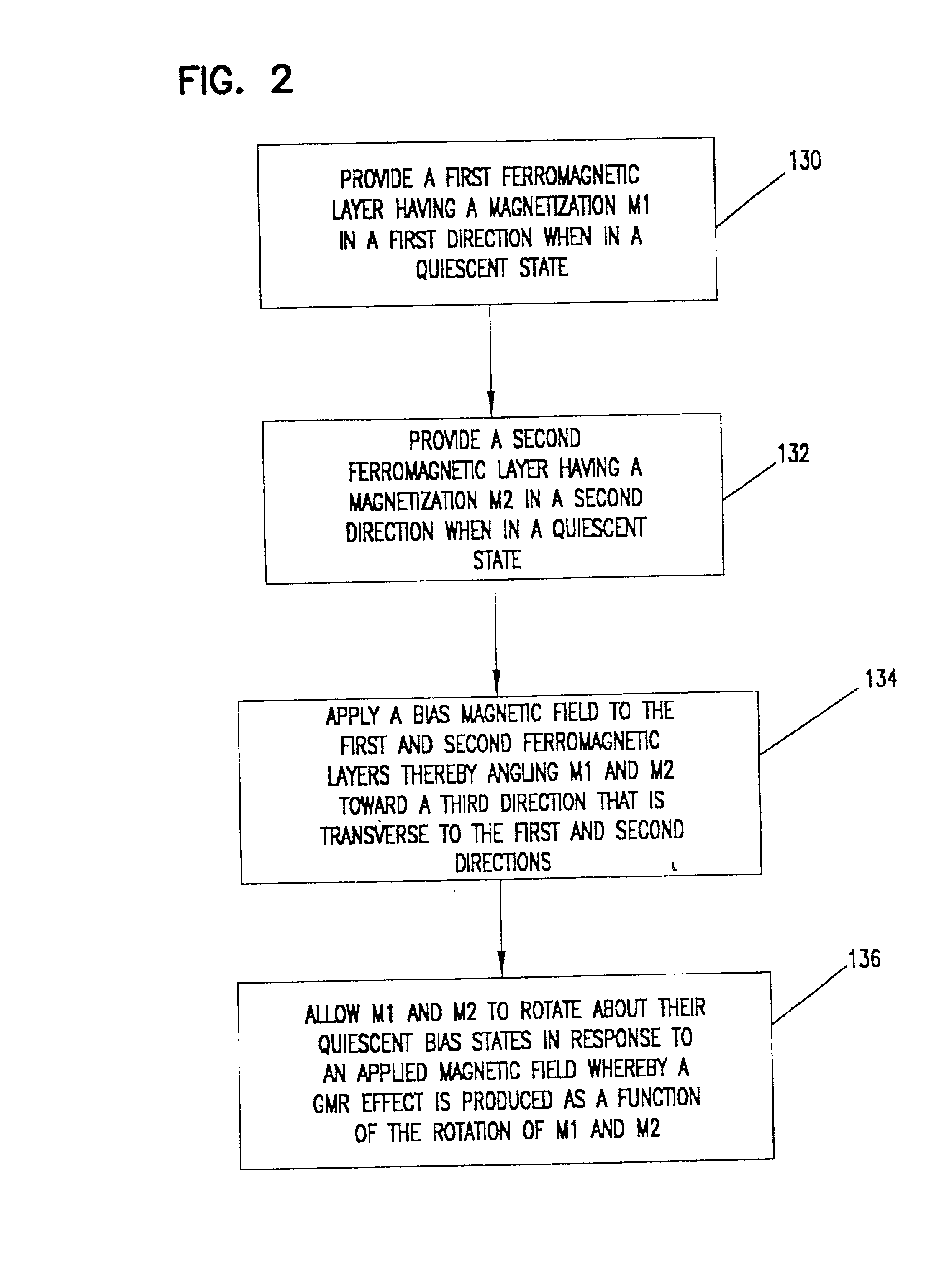Giant magnetoresistive sensor having selfconsistent demagnetization fields
- Summary
- Abstract
- Description
- Claims
- Application Information
AI Technical Summary
Benefits of technology
Problems solved by technology
Method used
Image
Examples
Embodiment Construction
[0021]The present invention relates to magnetoresistive sensors of the giant magnetoresistive (GMR) or spin valve type which are used to read back information from recording media, such as magnetic discs. It is desirable that spin valve sensors be capable of reading high areal density data recordings (on the order of 100 Gb / In2). It is necessary that the spin valve sensor be reduced in size in order to allow it to function with such high areal densities. One cost to the reduction in spin valve sensor size is the increased effect that demagnetization fields play in its operation. In particular, the demagnetization fields that would develop in typical spin valve sensor designs that have been sufficiently reduced in size would undesirably decrease the sensitivity of the spin valve sensor to applied to magnetic fields from the magnetic recording media. However, the present invention converts these demagnetization fields from a detriment into a benefit.
[0022]The spin valve sensor of the ...
PUM
 Login to view more
Login to view more Abstract
Description
Claims
Application Information
 Login to view more
Login to view more - R&D Engineer
- R&D Manager
- IP Professional
- Industry Leading Data Capabilities
- Powerful AI technology
- Patent DNA Extraction
Browse by: Latest US Patents, China's latest patents, Technical Efficacy Thesaurus, Application Domain, Technology Topic.
© 2024 PatSnap. All rights reserved.Legal|Privacy policy|Modern Slavery Act Transparency Statement|Sitemap



